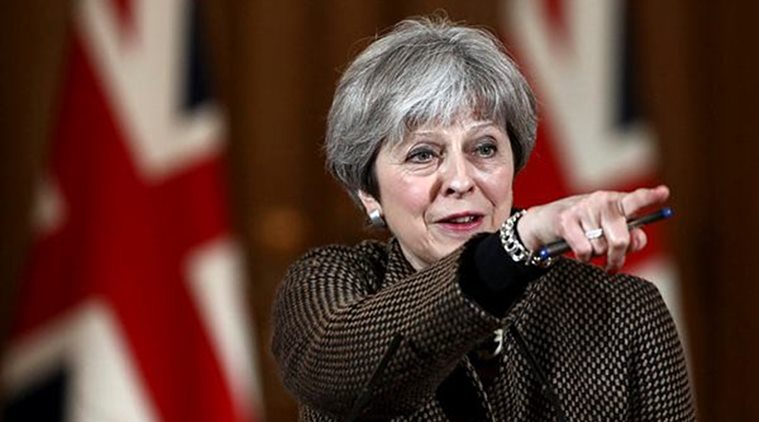Out of my mind: Brexit decisions
Political divisions on this issue run through both the ruling party and the Opposition. The process of leaving has a time limit, which ends on March 29, 2019. The UK has to negotiate with the European Commission.

Britain’s Prime Minister Theresa May. (Reuters file photo)
Brexit has been a leading problem for the UK for more years than one would like to remember. A movement has been growing in the country for over 20 years. In 1997, James Goldsmith, a multi-millionaire, launched the Referendum Party which fielded candidates in every seat, not even one of whom got elected.
Another fringe party, the UK Independence Party (UKIP), emerged soon after to argue for withdrawal from the EU. The Conservative Party was divided between those who wanted to leave the European Union and those who were supportive. The former were fervent supporters of Margaret Thatcher and the rest were happy she had gone by 1991.
When he became leader of the party in 2005, David Cameron vowed to make his party stop obsessing about Europe. To shut up his troublesome party faction, Cameron held a referendum on the question of whether the UK should remain in the EU or leave it. To his surprise, the voters chose to leave by a margin of two million votes or 4 percentage points, with a voter turnout of 74 per cent. Cameron resigned as his policy had failed.
His successor Theresa May was chosen by the Conservative Parliamentary Party and famously said “Brexit means Brexit”.
The question remained: what did Brexit mean. The European Union is a Customs Union which has no tariffs on trade moving from one country to another within the EU. There are tariffs on goods from outside unless a Free Trade Agreement (FTA) has been signed (the EU and India have been negotiating on an FTA for years). There is also a single market, which means professional people can work anywhere within the EU no matter where they were trained. Health and safety rules are standardised. So the question has been: how does the UK place itself vis-a-vis EU after Brexit? A hard Brexit would mean severing all ties and becoming a third country as India is to the EU.
Then there were degrees of association preserved which got labelled as soft Brexit. Soft can go from some retained association to a much deeper one, which almost meant no Brexit. Political divisions on this issue run through both the ruling party and the Opposition. The process of leaving has a time limit, which ends on March 29, 2019. The UK has to negotiate with the European Commission.
Time was running out and no certainty had emerged. Theresa May continued to be ambiguous as people suspected she was a weak Prime Minister. There were Big Beasts within the Cabinet who openly criticised her. So on July 6, she gathered her Cabinet at Chequers, the Prime Minister’s weekend retreat. She presented a soft Brexit proposal and surprisingly, the entire Cabinet agreed. This surprised many MPs because there were said to be hard Brexit champions who had promised a rebellion. The hard Brexit camp realised they had lost. Many said they would challenge May’s leadership and provoke a leadership election.
Two Cabinet ministers and a few junior ministers have resigned since, but by not resigning on the spot at the July 6 Cabinet meeting, they lost face. But at the end of the day, Brexit policy has been formulated by a Prime Minister controlling her Cabinet and marginalising her rivals. But it is also a lesson in how Cabinets can discuss, disagree and decide.
For all the latest Opinion News, download Indian Express App
More From Meghnad Desai
- Out of My Mind: IOU, RITA, TINAIn Malaga, there was a conference where they discussed topics such as the Index of Opposition Unity (IOU). Don’t believe There is No Alternative (TINA)…
- Out of my mind: Cross dressingThe Opposition has the one-item agenda of hating Modi. As in 1971, when the cry of the Old Congress was ‘Indira Hatao’, now it is…
- Groundhog stateA referendum in the Indian part of J&K should ask the people a simple question: Do you wish to stay in India or not?..







































No hay comentarios:
Publicar un comentario